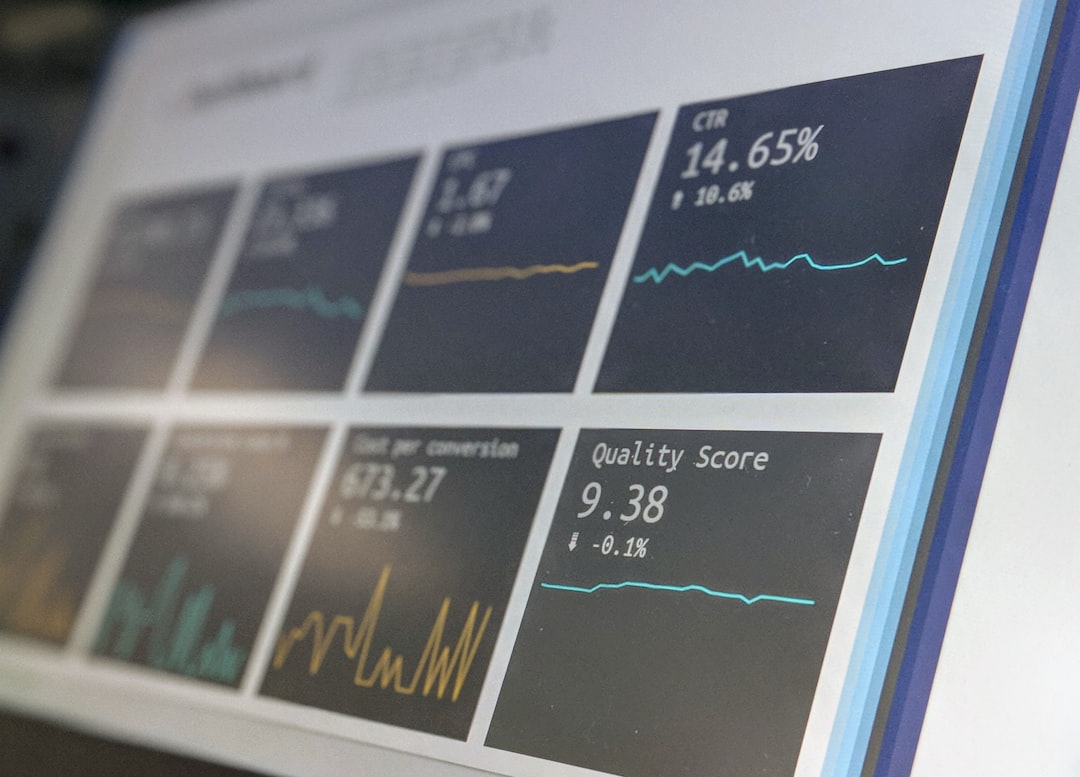A user-friendly interface is crucial for business systems, enabling employees to navigate and use software efficiently with minimal training. An effective user interface should be intuitive, visually appealing, and responsive, allowing users to complete tasks quickly and easily. A well-designed dashboard with clear navigation and easily accessible features significantly enhances user experience.
Customizable layouts and personalized settings further improve usability by allowing users to adapt the interface to their specific requirements. A user-friendly interface should also incorporate helpful prompts and notifications to guide users through various processes and alert them to important updates or tasks. This feature helps prevent errors and ensures employees are aware of critical information.
A business system with a user-friendly interface can result in increased productivity, reduced training time, and improved employee satisfaction. Conversely, a poorly designed interface can lead to confusion, errors, and decreased efficiency. Cluttered layouts, complex navigation, and unintuitive features can frustrate users and impede their ability to perform tasks effectively.
When evaluating a business system, it is essential to consider the user interface and ensure it meets the needs of your employees.
Key Takeaways
- The user-friendly interface of the system makes it easy for employees to navigate and use the platform efficiently.
- The system seamlessly integrates with other business systems, allowing for smooth data flow and communication between different departments.
- Customization options enable businesses to tailor the system to their specific needs and workflows.
- Real-time data access and reporting provide up-to-date insights for informed decision-making.
- Mobile accessibility allows users to access the system on the go, increasing productivity and flexibility.
Integration with other business systems
Streamlined Operations and Improved Efficiency
For instance, a sales team using a CRM system should be able to easily access customer data from the business system without having to switch between multiple applications. This can save time and reduce the risk of errors by ensuring that all relevant information is readily available.
Facilitating Data Sharing and Synchronization
Furthermore, integration with other systems can also facilitate data sharing and synchronization, allowing for real-time updates and accurate reporting across the organization. This can lead to better decision-making and improved collaboration between different departments.
Automating Processes and Reducing Errors
Integrated systems can automate processes such as data entry, invoicing, and inventory management, further increasing productivity and reducing manual errors. On the other hand, a business system that does not integrate well with existing systems can lead to data silos, duplicate entry, and inefficiencies.
Assessing Integration Capabilities
Therefore, it’s essential to carefully assess the integration capabilities of a business system before making a decision. This will help ensure that the chosen system can integrate seamlessly with existing systems, leading to improved efficiency, productivity, and decision-making.
Customization options

Customization options are crucial for businesses as they allow for tailoring the software to specific needs and workflows. A business system with extensive customization capabilities can adapt to unique business processes and requirements, rather than forcing the organization to conform to rigid software limitations. For example, customizable fields, forms, and workflows can accommodate different data structures and business rules, ensuring that the software aligns with the organization’s operations.
Furthermore, customizable reporting and analytics tools can provide valuable insights tailored to the specific needs of different departments or roles within the organization. This can empower employees to make data-driven decisions and gain a deeper understanding of their performance and areas for improvement. Additionally, customizable user permissions and access controls can ensure that sensitive information is protected while still allowing for efficient collaboration and workflow management.
On the other hand, a lack of customization options can limit the flexibility of a business system and force businesses to adapt their processes to fit the software’s constraints. This can lead to inefficiencies, resistance from employees, and ultimately hinder the organization’s ability to innovate and grow. Therefore, when evaluating a business system, it’s important to consider the level of customization it offers and whether it can adapt to the unique needs of your business.
Real-time data access and reporting
Real-time data access and reporting capabilities are essential for businesses to make informed decisions and respond quickly to changing market conditions. A business system that provides real-time access to critical data such as sales figures, inventory levels, or customer interactions allows for proactive decision-making and agile responses to opportunities or challenges. For example, a sales manager should be able to instantly access up-to-date sales performance metrics to identify trends or issues that require immediate attention.
Furthermore, real-time reporting tools can provide valuable insights into various aspects of the business, allowing for continuous monitoring of key performance indicators and metrics. This can help identify areas for improvement, track progress towards goals, and ensure that the organization is on track to meet its objectives. Additionally, real-time data access can facilitate collaboration by enabling employees to share and access information instantly, leading to more efficient workflows and better communication.
On the other hand, a business system that provides only delayed or static reporting can hinder decision-making by providing outdated or incomplete information. This can lead to missed opportunities or reactive responses that may not be as effective as proactive measures based on real-time insights. Therefore, when evaluating a business system, it’s important to consider its real-time data access and reporting capabilities to ensure that it meets the organization’s need for timely and accurate information.
Mobile accessibility
Mobile accessibility is increasingly important for businesses as employees are often on the go and need to access critical information from anywhere at any time. A business system with mobile accessibility allows employees to perform tasks, access data, and collaborate with colleagues using their smartphones or tablets. This can greatly enhance productivity by enabling employees to stay connected and productive even when they are away from their desks.
For example, a sales representative visiting a client should be able to access customer information, update records, or generate quotes using a mobile device without having to wait until they are back in the office. Additionally, mobile accessibility can facilitate real-time communication between employees, allowing for quick decision-making and efficient collaboration regardless of location. This can lead to faster response times and improved customer service.
On the other hand, a business system that lacks mobile accessibility can limit employees’ ability to work efficiently outside of the office, leading to delays in communication and decision-making. This can hinder productivity and potentially impact customer satisfaction. Therefore, when evaluating a business system, it’s important to consider its mobile accessibility and ensure that it meets the needs of employees who require on-the-go access to critical information.
Security features

Security features are paramount when evaluating a business system as they ensure that sensitive data is protected from unauthorized access or breaches. A robust security infrastructure should include features such as encryption, user authentication, role-based access controls, and regular security updates to safeguard against potential threats. Additionally, compliance with industry standards such as GDPR or HIPAA may be necessary depending on the nature of the business and the type of data being handled.
Furthermore, a secure business system should provide audit trails and activity logs to track user actions and changes made to data, providing transparency and accountability within the organization. This can help prevent internal misuse of data and identify potential security vulnerabilities or breaches. Additionally, regular security assessments and penetration testing can help identify and address any weaknesses in the system’s security measures.
On the other hand, a business system with inadequate security features can expose the organization to various risks such as data theft, unauthorized access, or regulatory non-compliance. This can damage the organization’s reputation, lead to financial losses, or even result in legal consequences. Therefore, it’s crucial to thoroughly assess the security features of a business system before implementation to ensure that sensitive data is adequately protected.
Scalability and flexibility
Scalability and flexibility are important considerations when evaluating a business system as they determine its ability to grow alongside the organization’s needs and adapt to changing requirements. A scalable system should be able to handle increasing data volumes, user numbers, or transaction loads without sacrificing performance or reliability. This ensures that the organization can expand its operations without being limited by its software infrastructure.
Furthermore, a flexible business system should be able to accommodate changes in business processes or requirements without requiring extensive customization or redevelopment. This allows for agility in responding to market trends or internal changes while maintaining operational efficiency. For example, a flexible system should allow for easy configuration of new workflows or data structures without disrupting existing operations.
On the other hand, a business system that lacks scalability or flexibility may become obsolete as the organization grows or evolves. This can lead to increased costs associated with replacing or upgrading the software infrastructure in order to meet new demands. Therefore, when evaluating a business system, it’s important to consider its scalability and flexibility to ensure that it can support the organization’s long-term growth and adaptability.
In conclusion, when evaluating a business system for your organization, it’s important to consider various factors such as user-friendly interface, integration with other systems, customization options, real-time data access and reporting capabilities, mobile accessibility, security features, scalability, and flexibility. Each of these factors plays a crucial role in ensuring that the software meets your organization’s specific needs while providing a solid foundation for growth and innovation. By carefully assessing these aspects of a business system, you can make an informed decision that will support your organization’s success now and in the future.
If you are interested in learning more about how SMS-iT is revolutionizing business communications, you should check out the article “Revolutionize Your Business Communications with SMS-iT – Get a Quote Today.” This article discusses the ways in which SMS-iT can transform the way your business communicates with customers and clients, ultimately leading to improved efficiency and productivity. It’s definitely worth a read to understand the full potential of SMS-iT’s ERP system. (source)
FAQs
What is SMS-iT ERP?
SMS-iT ERP is an Enterprise Resource Planning (ERP) software designed to help businesses manage and integrate their core business processes such as finance, human resources, supply chain, and customer relationship management.
What are the essential features to look for in SMS-iT ERP?
Some essential features to look for in SMS-iT ERP include:
1. Financial Management: Ability to manage accounting, budgeting, and financial reporting.
2. Supply Chain Management: Tools for inventory management, procurement, and order fulfillment.
3. Human Resources Management: Modules for employee management, payroll, and benefits administration.
4. Customer Relationship Management: Features for managing customer interactions, sales, and marketing.
5. Reporting and Analytics: Tools for generating reports and analyzing business data.
6. Integration Capabilities: Ability to integrate with other business systems and applications.
7. Scalability: Ability to scale and adapt to the changing needs of the business.
8. User-Friendly Interface: Intuitive and easy-to-use interface for employees to navigate and use the software effectively.
How can SMS-iT ERP benefit businesses?
SMS-iT ERP can benefit businesses by streamlining their operations, improving efficiency, and providing better visibility into their business processes. It can also help businesses make more informed decisions, improve customer satisfaction, and drive overall business growth.







